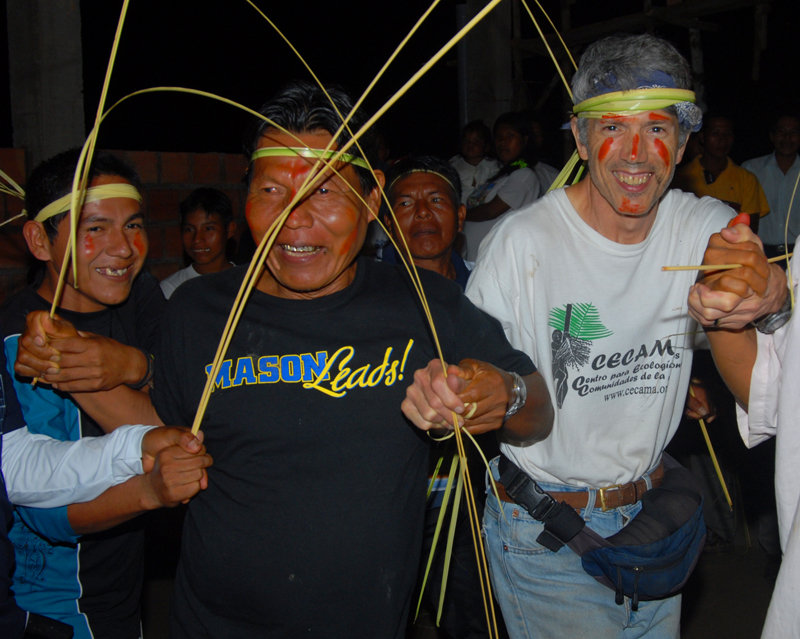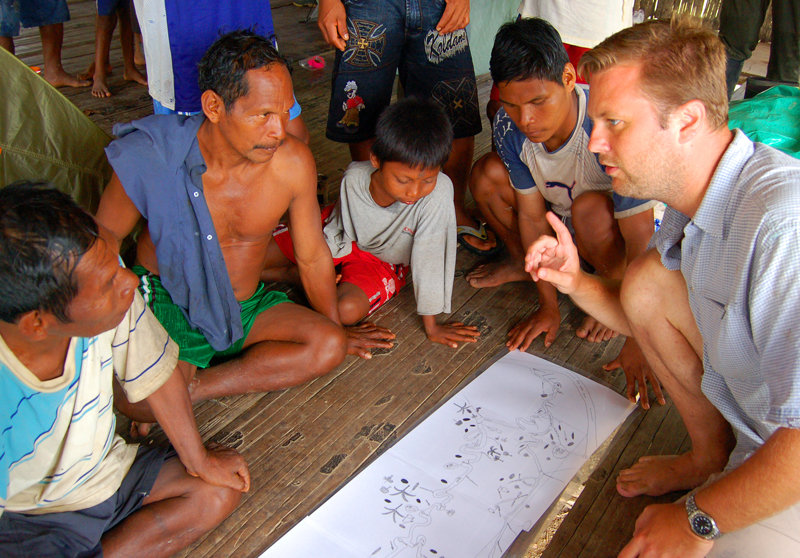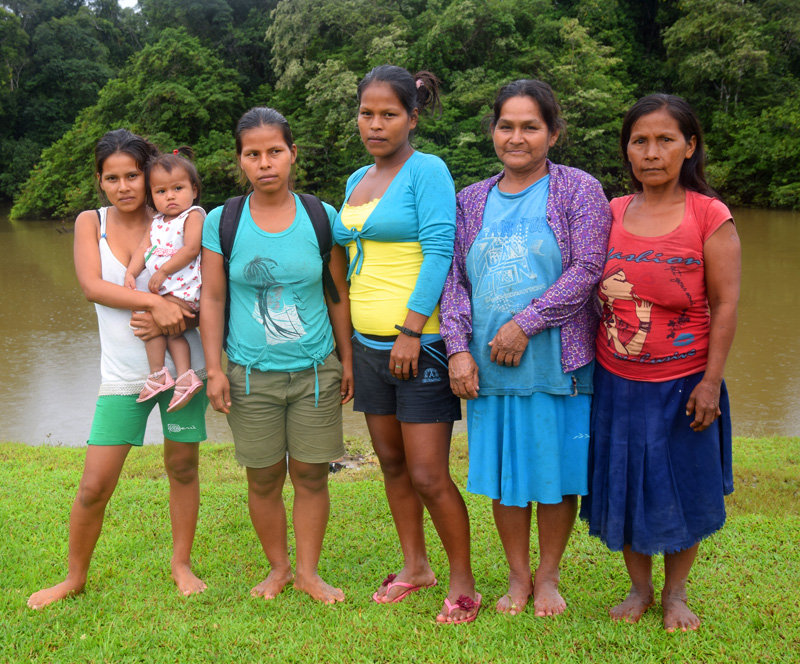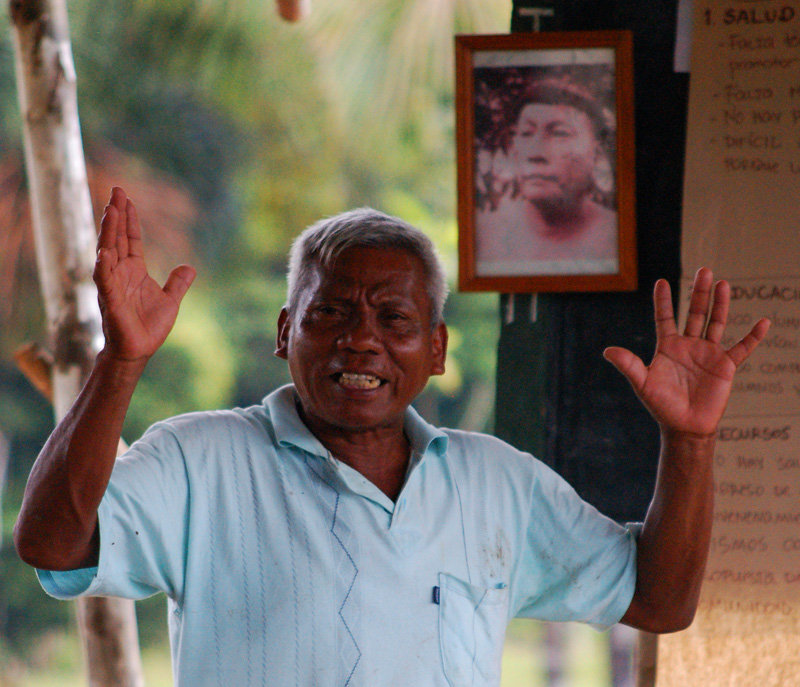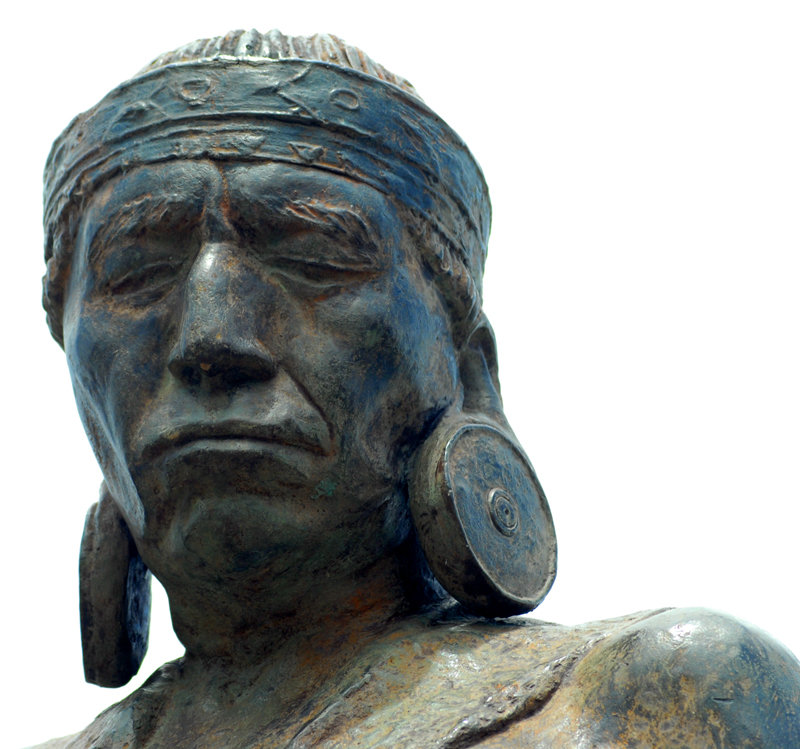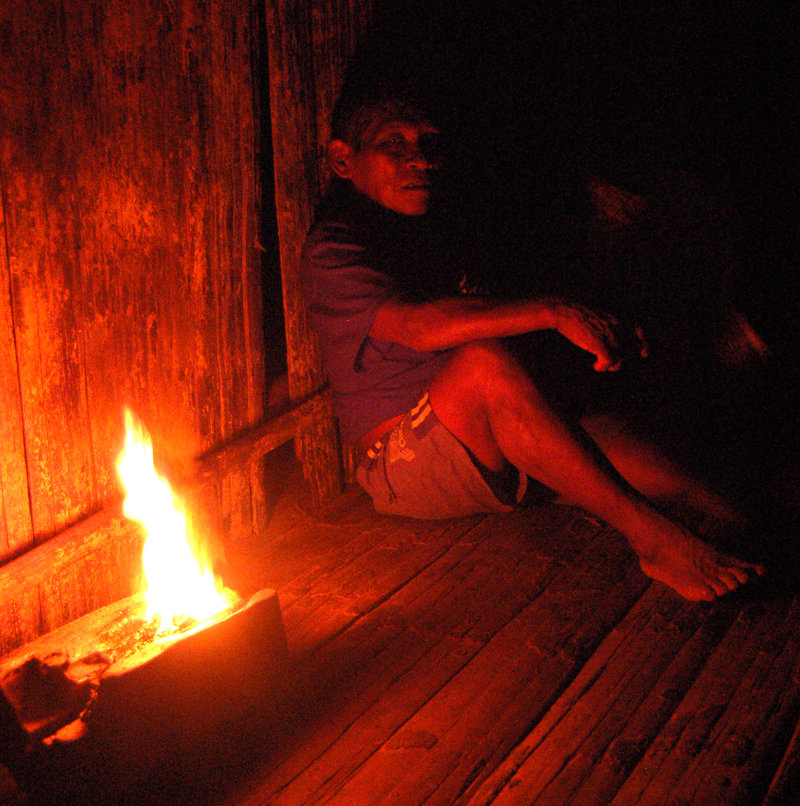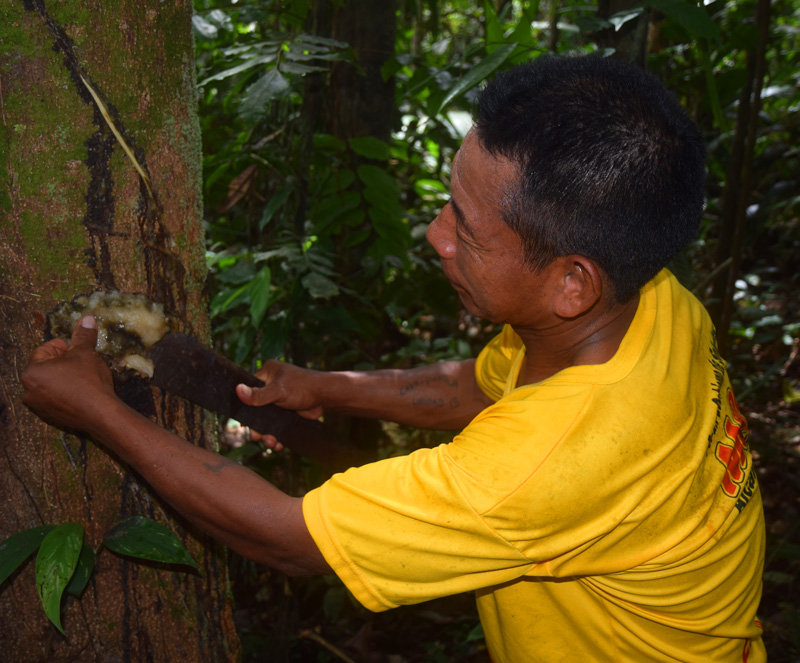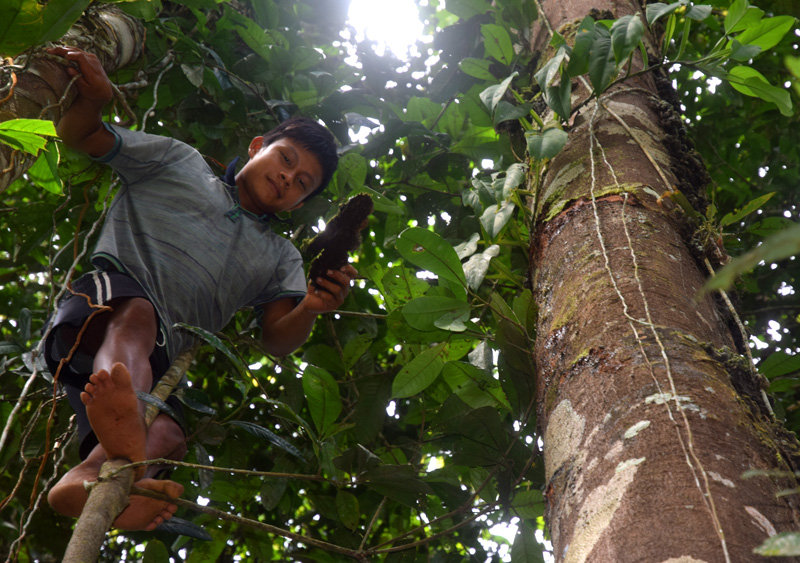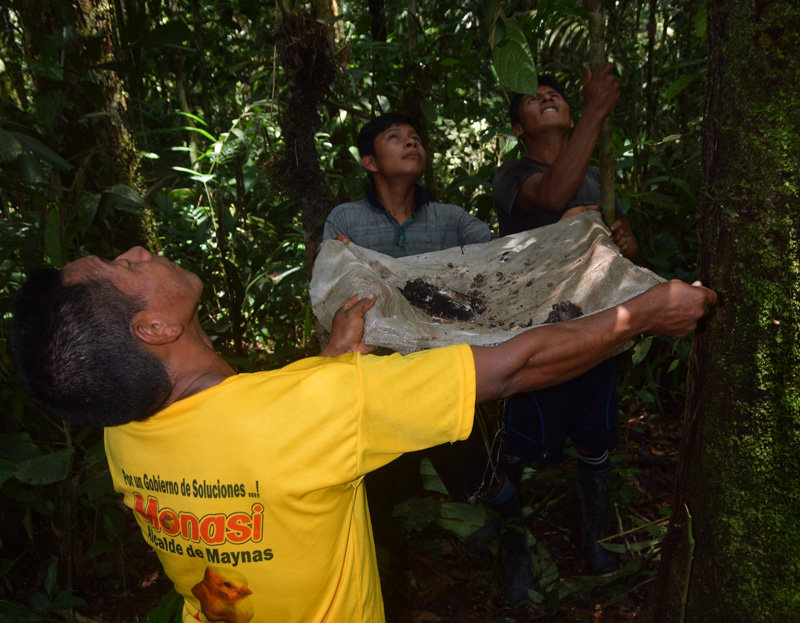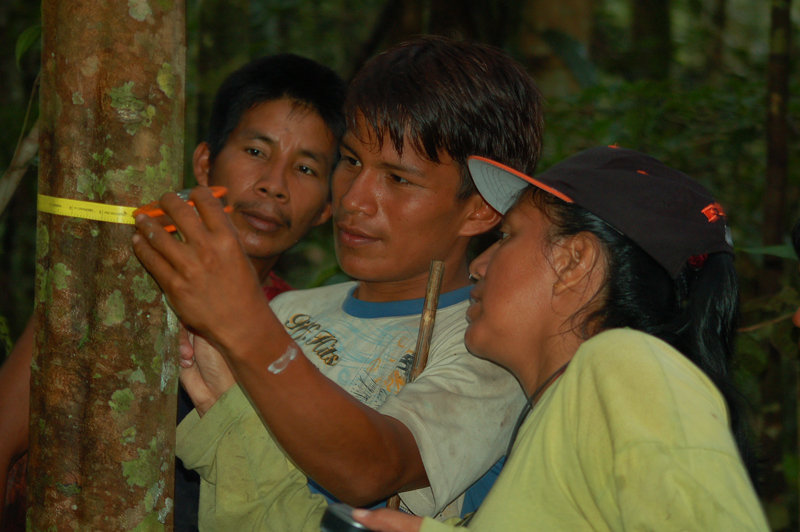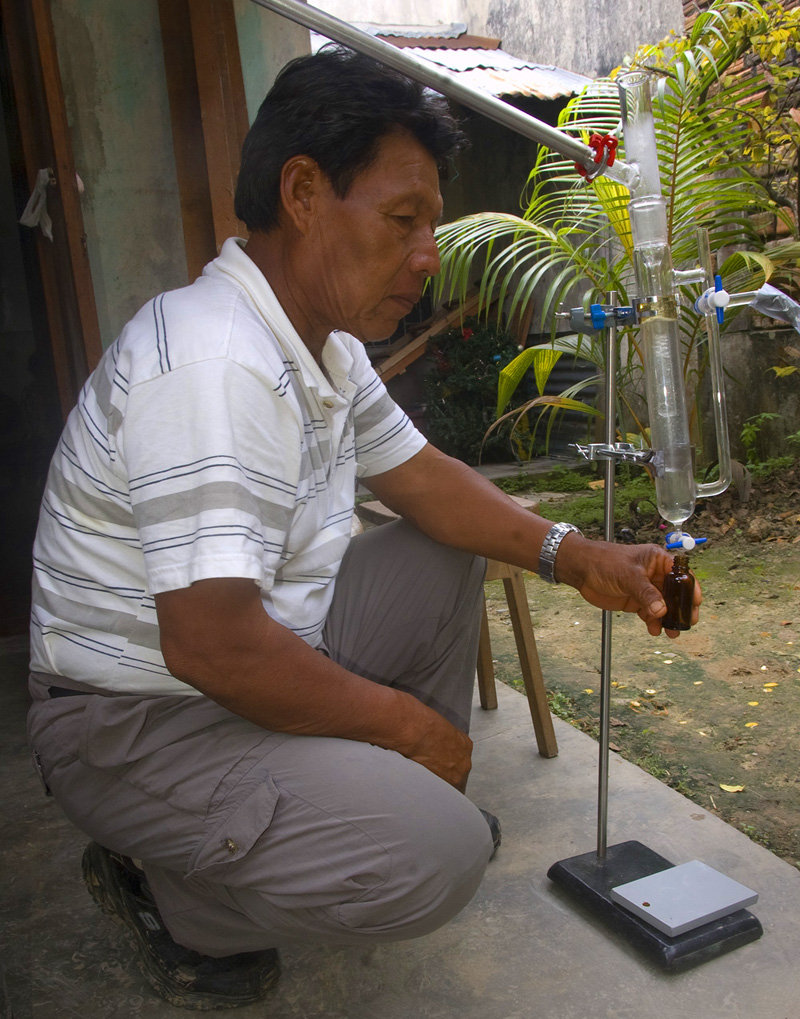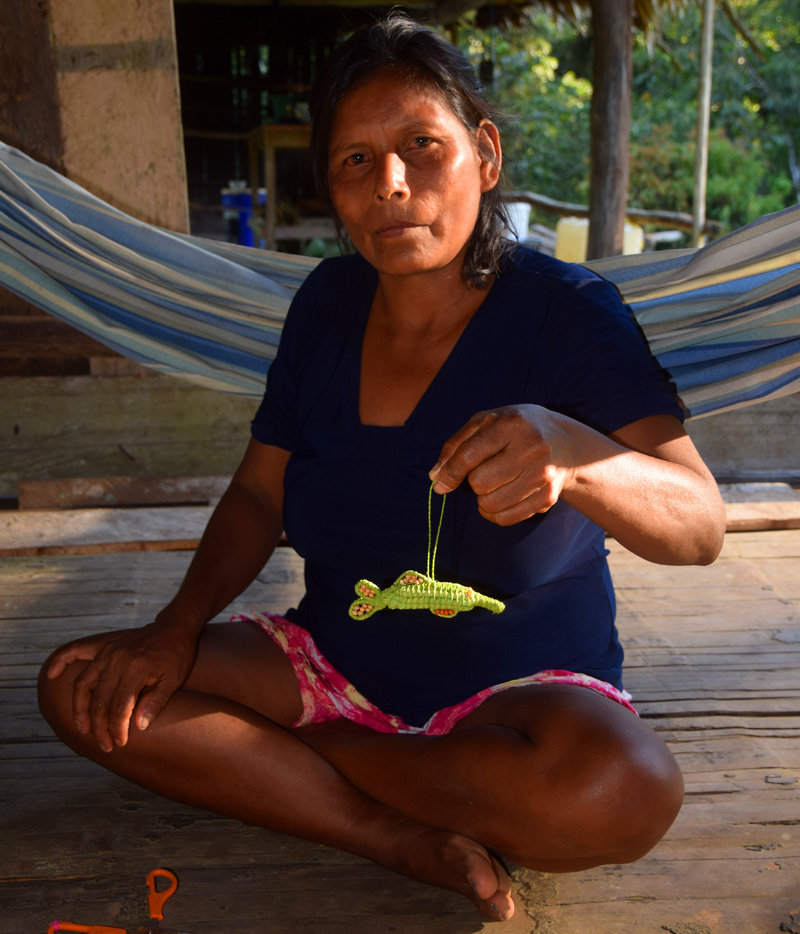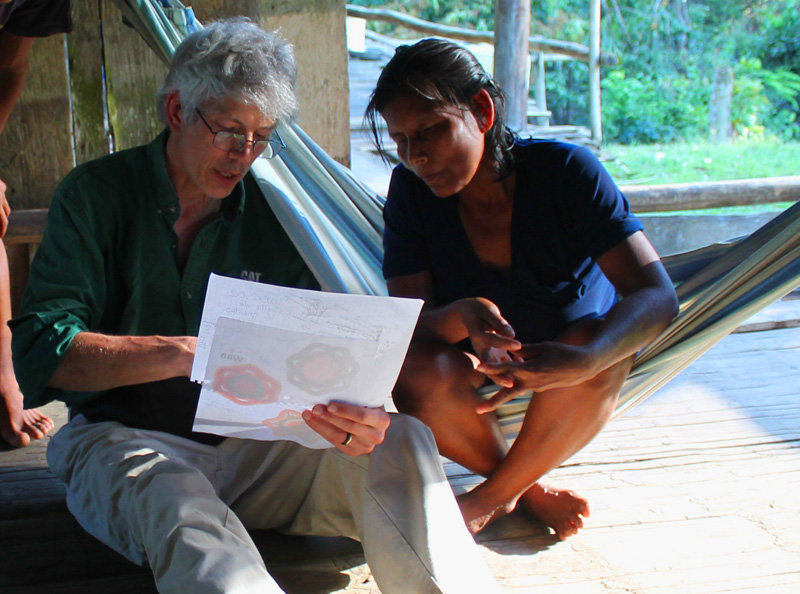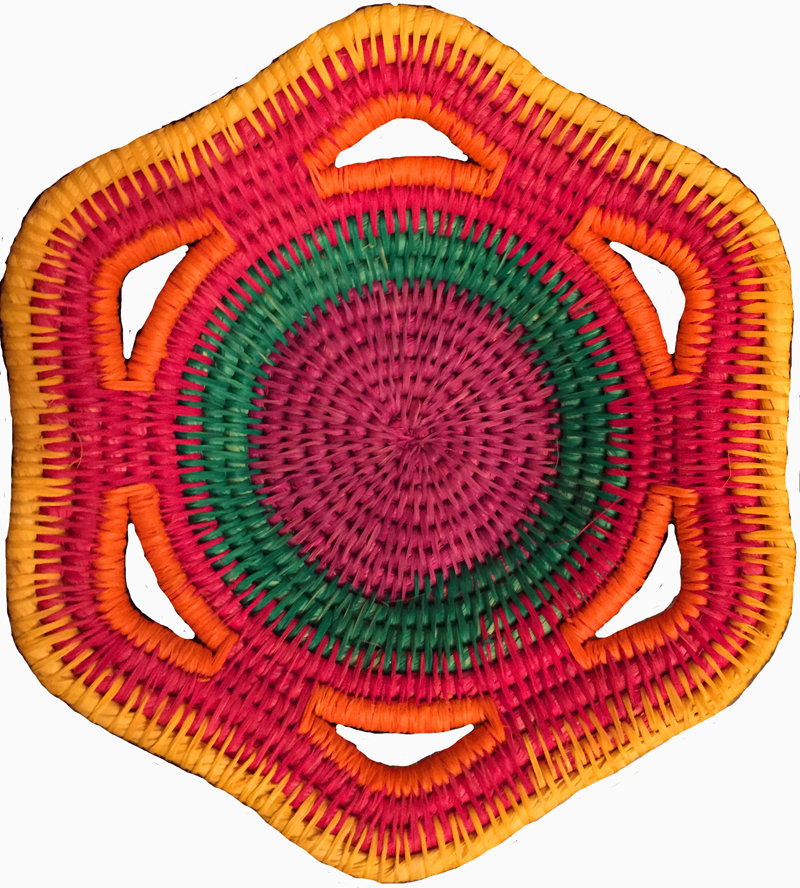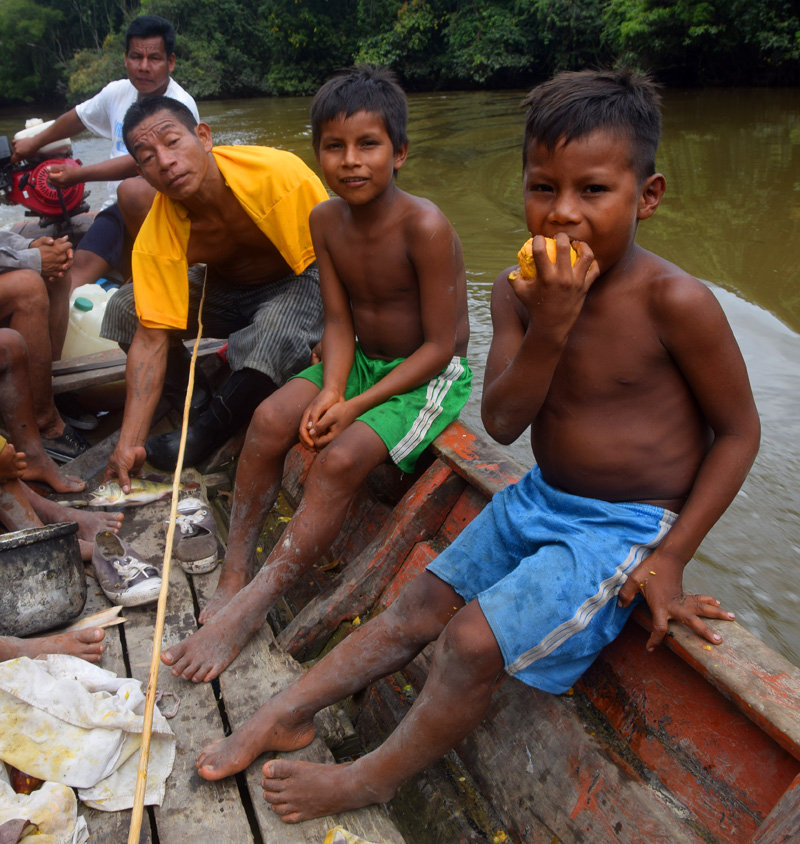By Campbell Plowden | CACE Executive Director & Project Leader
I just returned to Iquitos after a successful four day visit to the Maijuna native community of Nueva Vida in the Napo River region of the northern Peruvian Amazon. The main purpose of the trip was to meet their artisans and see if they wanted to work with CACE to develop and market several new models of handicrafts. I also wanted to explore the potential for harvesting copal resin with them and distilling it into fragrant essential oil as a new source of sustainable income for the village.
My journey began with a speedboat ride at dawn from Iquitos to the Amazon River town of Mazan with my CACE videographer companion Tulio. After stocking up on supplies, we eventually met up with our Maijuna guides Everest and his father “Shebaco”. Thanks to an introduction from long-time Maijuna friend (and CACE board member) Michael Gilmore, we had met at a Maijuna federation congress in 2009, and he hosted me last summer in Sucusari when we conducted a quick search for copal trees near his village. I much appreciate that he gave me the name “Baiyiri” - the Maijuna word for copal.
Our original host for this visit was going to be Walter from Nueva Vida, but on two days’ notice he had flown to Lima with two other Maijuna to meet with the Peruvian President. This was a critical meeting that marked the final hurdle to winning government approval for a regional protected area that would encompass the four main Maijuna villages in the Napo and Putumayo River region and the forest in between. This struggle to gain legal recognition for their traditional lands coincided with a multi-year battle against a road project that would go through the heart of it. I wished Walter well on his mission and was happy to have Shebaco with me again for mine.
Like many native groups, the Maijuna are striving to improve their standard of living and standing in modern Peruvian society and maintain certain aspects of their culture that give them pride and sustenance. The Maijuna were once called by the derogatory term “orejones” (big ears) because they had the custom of placing increasingly larger disks into their ear lobes. They gave up this practice a generation ago, but they embraced a program led by linguists from U.C. Berkeley that has reinvigorated the teaching and use of the Maijuna language by all generations.
Half a dozen women from Nueva Vida learned how to make decorative baskets from chambira palm fiber that were similar to ones made by campesino artisans from the Tahuayo River, but their skills languished for several years because the workshop’s sponsors did not provide follow-up support to market any baskets they made. Since there was a new spark to this enterprise, Michael thought that this would be a propitious time to connect with these budding artisans.
Due to our late start from Mazan, we didn’t get into Nueva Vida in Shebaco’s peque-peque (motor canoe) until well after dark. After setting up our tents in our host’s main room and a quick supper of tuna fish and crackers, we went to sleep. My visit began in earnest the next morning by meeting almost the whole community. I spoke no Maijuna beyond my nickname, but showing and discussing a video of our handicraft project with other artisans quickly established a common language dealing with chambira palm fiber and other plants used in making woven crafts. There was no doubt they could make the kind of baskets we wanted, but it took a patient dialogue to sort through which dye plants they had available to make certain colors and which colors we should avoid using in our initial designs unless we wanted to provide artificial dyes from the city. Our discussion about pricing for the baskets was uncomfortable for a time because their scale was different than other villages we have bought similar products from.
While the Maijuna were all familiar with the basic uses of copal resin – burning it for light or boiling it to caulk their canoes, they were fascinated to see and hear the stories about the intimate relationships that copal resin exuding from the trees has with various weevils, flies, ants and bees. For two days I accompanied Shebaco and rotating four-man teams from Nueva Vida to search for copal. We had most luck finding large fresh lumps on trees on or near the tops of little hills and spent the other half of our time slogging through swampy low lying areas. Harvesting a lump was sometimes as simple as cutting it off with a machete at chest height. A team member lashed his machete to a pole and thrust the blade under lumps that were attached to the trunk ten to twenty feet from the ground. In a few cases, a spry Maijuna wrangled his way up a nearby small tree or vine to get at some lumps that were twice as high. Two men tried to catch the dislodged lumps below (in Tulio’s long-sleeve shirt the first day and an old cassava carrying bag on the second) while trying to keep dry resin bits from falling in their eyes.
The teams quickly adopted our protocol of not harvesting small fresh resin lumps so the weevils inside them could mature and stimulate more resin lumps in the future. They also understood that while they could take old black lumps back to their homes to stoke cooking fires, the dry odorless lumps were not worth distilling because they had lost most of their essential oil. We collected GPS points at all of the trees to aid in finding these trees again in five or six years and combine them with satellite landscape data to help identify other good sites for finding copal trees in more distant Maijuna forest areas.
Other highlights of my time in Nueva Vida included fishing with Shebaco and Everest and meeting Elena, an artisan who had woven a beautiful river dolphin as a sample keychain. After Tulio talked with her, I commissioned her on the spot to make fifteen more as Christmas tree ornaments. I was impressed that Tulio was able to sincerely engage with people who are understandably often very shy in this situation to become comfortable enough to share something about their craft making and other aspects of their lives. In the final hours of light, I was very happy to reach an agreement with the president of the artisan association about making an initial batch of baskets for us.
Our Nueva Vida hosts were accepting if circumspect in sharing their evaluation of our visit with us. Every community in this region has had multiple experiences with visitors from various groups coming in to pitch one project or another – many of which lack follow-up or don’t go well for other reasons so I understand why they temper their enthusiasm for a new venture until it proves worthwhile. I already felt a bond with Shebaco, but I was encouraged that several people from Nueva Vida asked me one and only one simple question: “When are you coming back?” So the dance has begun. I hope to see thirty beautiful baskets in three weeks as the next step.
Back in Iquitos, our project manager Yully set herself to the task right away of distilling the resin collected at Nueva Vida. It was great to learn that it shared the highest yield of essential oil we have produced so far from any region. Analyzing a sample of it will help determine its composition and commercial potential. If these aspects prove positive as well, the next step will be to formulate a management plan to guide the development of this local enterprise in the years to come.
Links:
By Campbell Plowden | Executive Director & Project Leader
By Campbell Plowden | Executive Director & Project Leader
Project reports on GlobalGiving are posted directly to globalgiving.org by Project Leaders as they are completed, generally every 3-4 months. To protect the integrity of these documents, GlobalGiving does not alter them; therefore you may find some language or formatting issues.
If you donate to this project or have donated to this project, you can recieve an email when this project posts a report. You can also subscribe for reports without donating.
Support this important cause by creating a personalized fundraising page.
Start a Fundraiser
